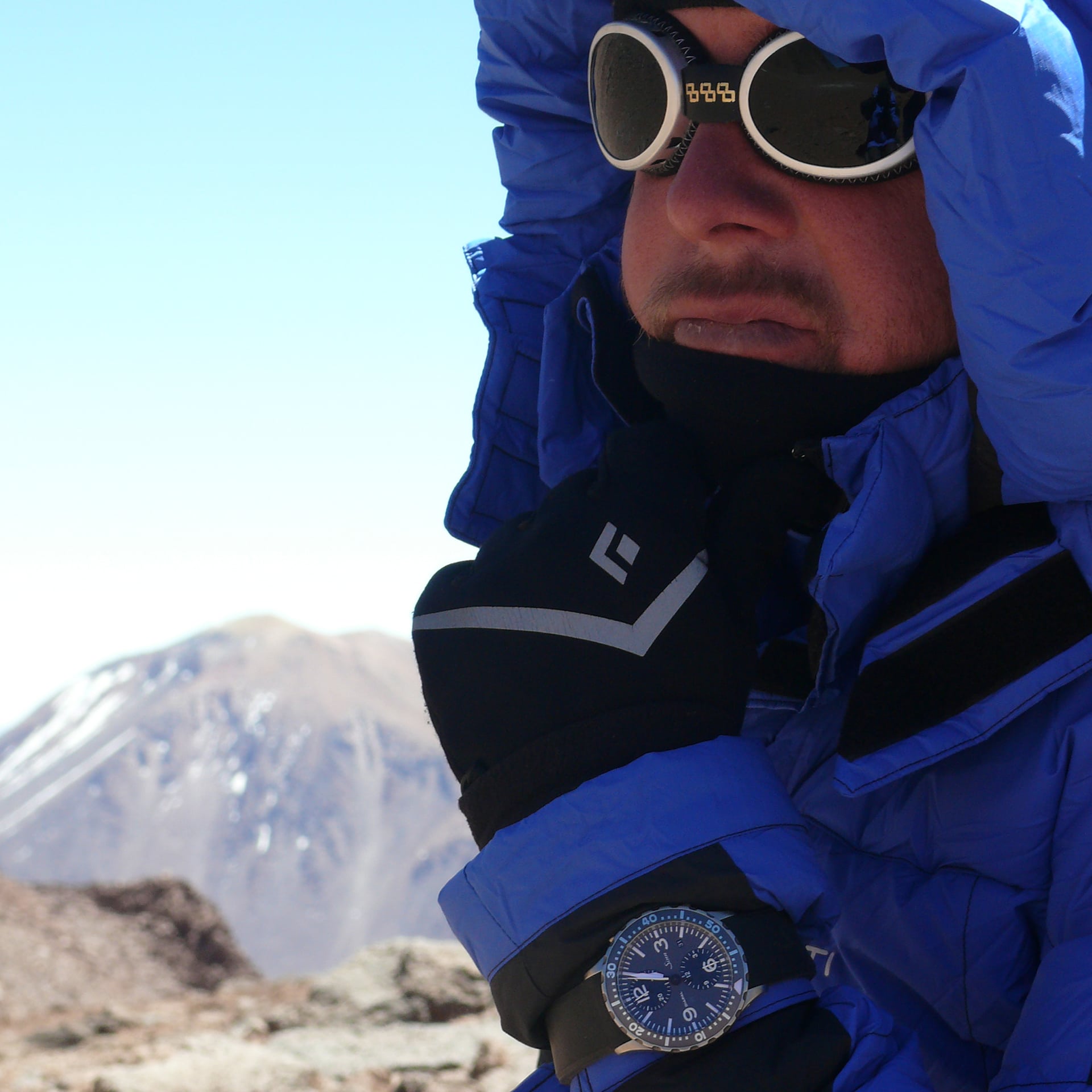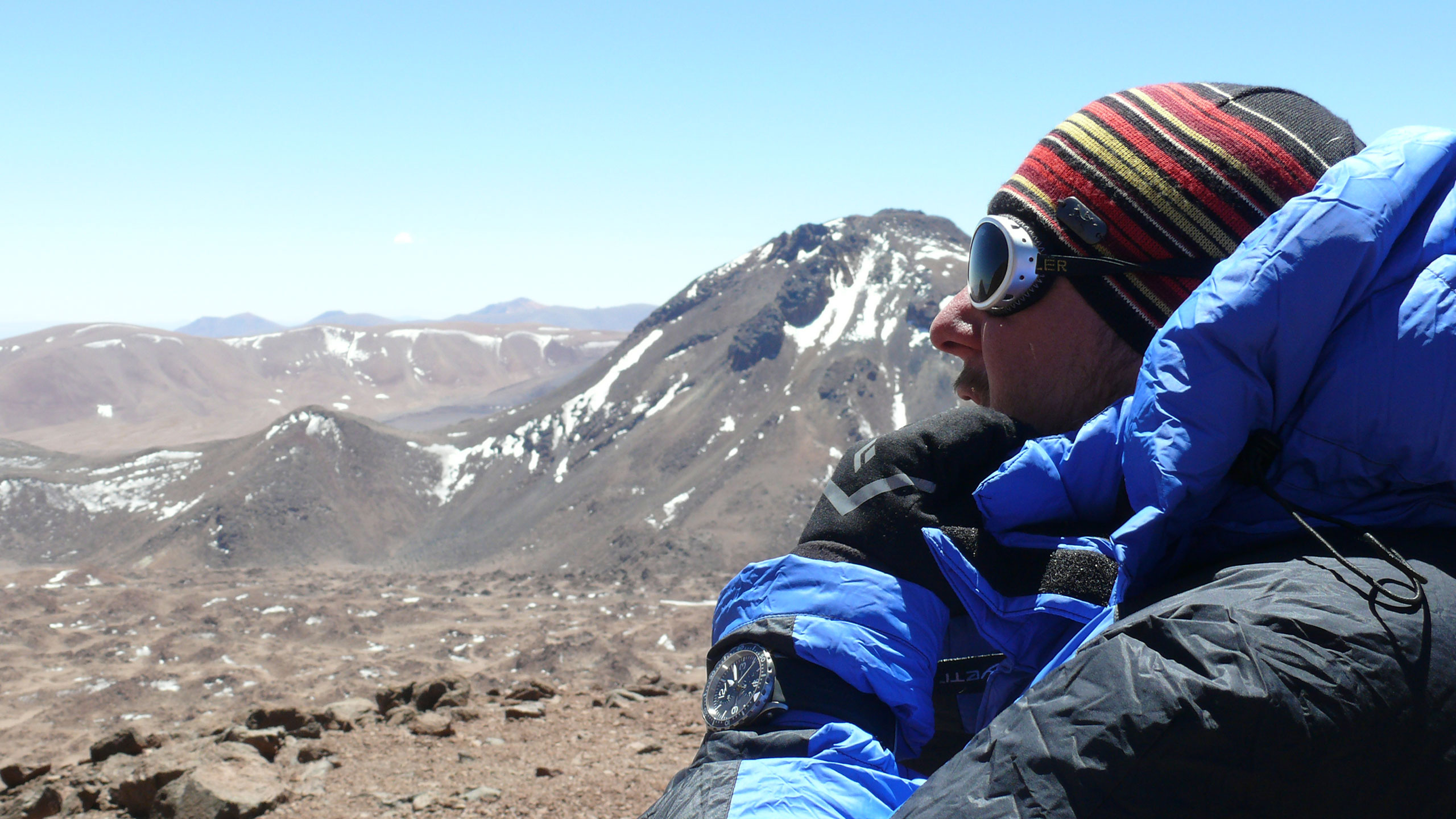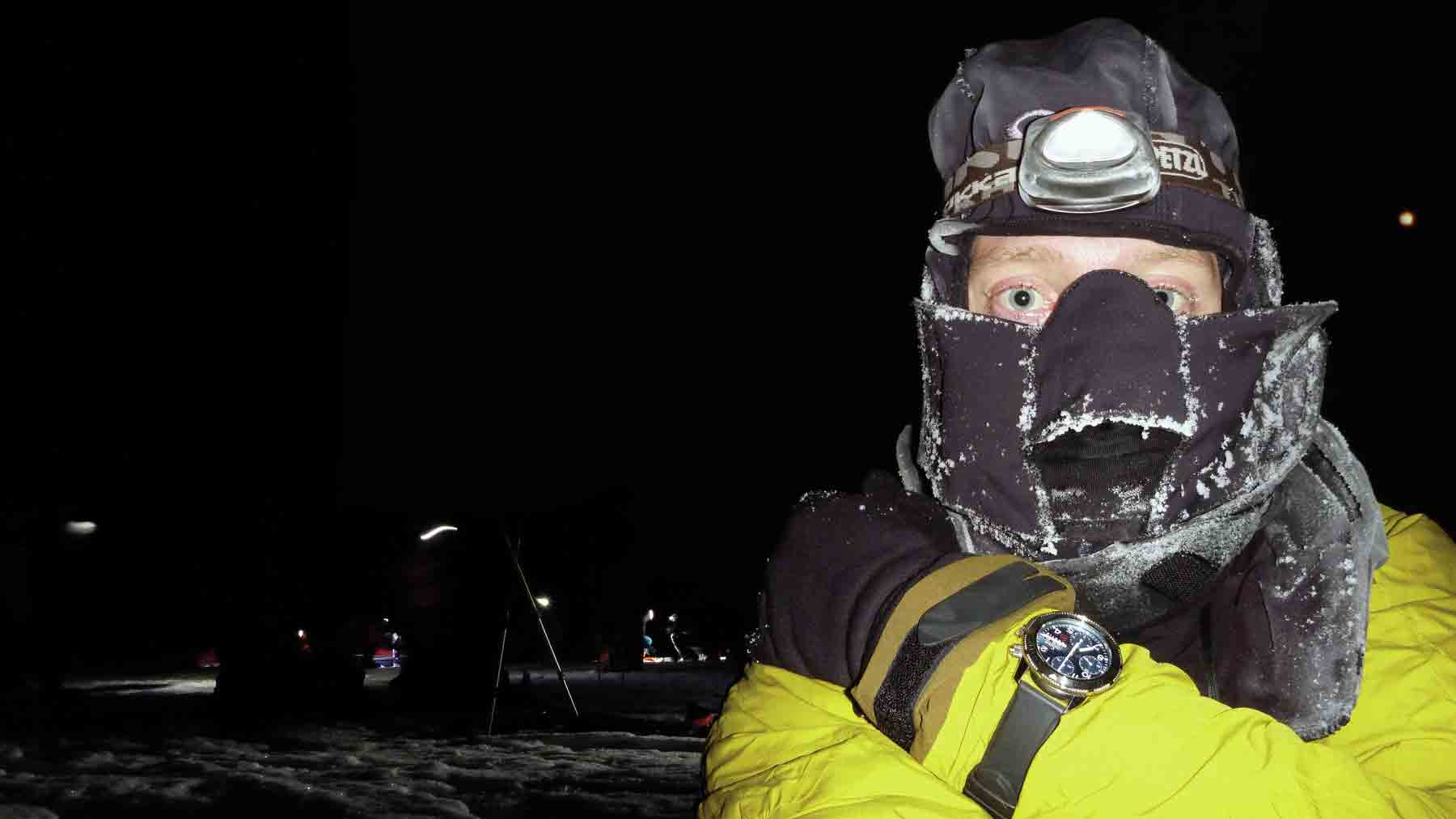La 757 DIAPAL est bien plus qu'un accessoire pour les amoureux des grands espaces
La magie des grands espaces
« Il existe un endroit sur terre où l'on a l'impression d'être si près de Dieu qu'il suffirait de tendre le bras pour lui serrer la main. » Telle est la légende qui accompagne les brochures touristiques vantant la beauté et la splendeur de la Patagonie. Dans l'imaginaire collectif, cette région du bout du monde incarne la nature sauvage par excellence et offre un parfait terrain d'aventure. C'est sans doute ce qui explique la magie qui s’en dégage, elle qui n'est délimitée par aucune frontière nette.
Située à l'extrême sud de l'Amérique du Sud, la Patagonie est une région au double visage. La Patagonie occidentale, qui appartient au Chili, est une terre de roche et de glace, sillonnée d'innombrables fjords, et parsemée d'îles sur sa façade pacifique. Les spectaculaires et imposants pics andins s'y élèvent dans un ciel aux couleurs changeantes. Le paysage semble irréel, étrange et mystérieux. La Patagonie orientale, plus grande, appartient à l'Argentine. De ses grandes étendues désertées, l'écrivain Jorge Luis Borges dit : « Il n'y a rien ici. Vous ne trouverez rien en Patagonie. » C'est en effet ce qu'inspirent ses plaines battues par des vents permanents qui semblent s'étirer à l'infini. En 1520, le navigateur portugais François Magellan débarque à Santa Cruz, sur la côte est. Découvrant la taille imposante des indigènes tehuelche, il les surnomme Patagons, en référence au géant Patagon, héros d'un roman chevaleresque populaire de l'époque.
C'est dans cette nature sauvage à la beauté saisissante que s'est établi Christian Moser, autrichien de naissance, qui a immigré en 2000 au Chili, ce pays qui s'étire sur plus de 4 000 kilomètres sur la côte ouest de l'Amérique du Sud, distance expliquant la diversité de ses climats. Cet homme, qui affirme posséder l'aventure dans ses gènes, vit aujourd'hui à Puerto Natales, ville de 19 000 habitants, qui sert de base aux excursions dans le célèbre parc national Torres del Paine et toute la Patagonie. Le fait que Puerto Natales soit situé à 250 kilomètres de la ville la plus proche révèle à quel point la zone est reculée.
Moser s'est engagé dans l'armée autrichienne à l'âge de 19 ans, où il a été formé comme parachutiste. C'est dans ce cadre qu'il a été appelé à Chypre pendant 10 mois, en 1990/91, pour intégrer la Force de réaction rapide des Nations unies. Après avoir suivi d'autres formations, notamment en méthodes de survie, et visité de nombreux pays, il a finalement choisi de poser ses valises au Chili, où il travaille en indépendant comme guide de randonnée en montagne. Sa passion pour la randonnée et l'escalade, qu'il doit à ses origines autrichiennes, a naturellement été exacerbée par sa formation. Il a immigré au Chili de façon volontaire. Attiré depuis toujours par l'Amérique du Sud, il est littéralement tombé amoureux des montagnes, glaciers, lacs et forêts patagons.


Il a donc décidé d'organiser des treks et des randonnées en montagne pour Européens en quête d'adrénaline. Ces raids sont très difficiles, aussi bien sur le plan mental que physique. Le terrain est très accidenté et nécessite une progression prudente, en prenant garde aux éboulements. L'ascension d'une montagne nécessite souvent de prendre la route en pleine nuit. Dans le nord du Chili, l'amplitude thermique entre jour et nuit est énorme. Le vent souffle en permanence, parfois jusqu'à 140 kilomètres/heure, soulevant des tempêtes de sable qui tournoie entre les sommets. À partir de 5 500 mètres d'altitude, l'air devient rare et les aventuriers doivent se contenter de moitié moins d'oxygène. « Pour nos expéditions en montagne, l'acclimatation et l'utilisation d'un équipement de qualité sont absolument essentielles », précise Christian Moser sur son site web, moseractive.cl. Pour ce deuxième point, il fait naturellement confiance à sa montre. Son fidèle compagnon depuis septembre 2009 est le modèle 757 DIAPAL, qu'il porte par tous les temps par-dessus sa manche.

Passionné de montres mécaniques, Christian Moser s'intéresse depuis son service militaire aux compteurs de mission, ultra-fiables grâce à leur robustesse. Ses expéditions sur plusieurs jours sont planifiées avec une rigueur toute militaire et une montre fiable est donc indispensable pour respecter le planning. « L'ascension des montagnes se déroulant souvent de nuit, il est très important de s'équiper d'une montre offrant une lisibilité dans l'obscurité. Les grands triangles lumineux sur la lunette de la 757 m'aident beaucoup », explique-t-il. Les technologies TEGIMENT et DIAPAL ont également fait leurs preuves dans les conditions extrêmes du climat patagon.
« Je suis enchanté par ma montre, qui est idéale pour les excursions en pleine nature. Elle a tout connu : le froid, le sable, les chocs contre les cailloux, et reste intacte, sans la moindre éraflure. Elle est robuste, entièrement axée sur la fonctionnalité, sans fioriture. Même si elle est un peu imposante, elle est très confortable au poignet. » Christian Moser illustre l'extrême précision, la fiabilité et la résistance à la buée de la 757 DIAPAL avec un exemple éloquent : « J'ai laissé une fois ma montre dehors toute la nuit, par -25 °C, à 4 300 mètres d'altitude. Au petit matin, je suis descendu en rappel dans un geyser où l'eau était à près de 50 °C. Ma montre n'a pas montré la moindre faiblesse et je n'ai constaté aucune formation de buée, malgré cette variation extrême de températures. C'est le grand mérite de sa technologie de déshumidification. » Ce récit explique pourquoi, pour Christian Moser, la 757 DIAPAL est le nec plus ultra. La supériorité technologique et la qualité de cette montre sont le « fruit de nombreuses années d'expérience et de développement ».


